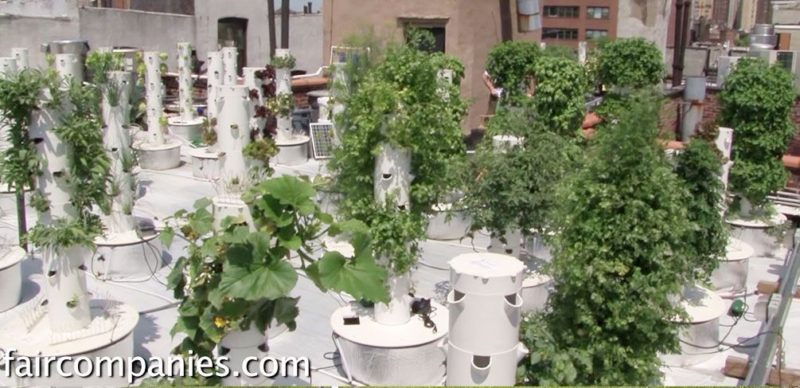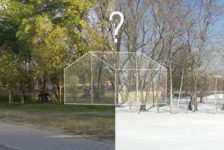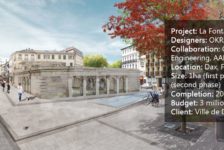We look at ways to make the urban landscape a productive landscape through the concept of edible planting schemes. Traditionally, the urban landscape has existed as an isolated, hardened core that relies heavily on the surrounding farmlands for fresh produce. As cities began to grow, they started to encroach on fertile, productive land, placing greater strain on the environment to support large populations. The result is the need to start growing food within the urban landscape, allowing people to have greater personal food security while providing more nutritional organic options. With this in mind, we look at 9 ways to incorporate edible planting into the urban landscape, looking at options from small-scale residential to large urban spaces.
Edible Planting
1. Vertical gardens Vertical gardens have become the new landscape craze, allowing hard, urban surfaces to become beautiful green walls. Edible leafy greens can easily be planted in pockets or containers, providing a large growing surface in urban areas with limited space. There are also other benefits of planting vertical gardens, such as increased building insulation, cooling, and soundproofing. WATCH: Wall Garden | Vertical Garden Installation & Operation
Related Articles:
- Landgrab City – Urban Farm
- Dublin Urban Farm: Interview with Paddy O’Kearney
- How to Provide Easy Access to Urban Agriculture in Over Populated Cities
2. Hydroponics Hydroponics involves the growing of plants without the use of soil by feeding plants with nutrient-rich water solutions. This method is ideal for growing edible foods in the city, as it produces a fast yield of intensely flavored and nutritional vegetables, which can compete with the supply and demand of industrial-scale farming. John Mooney’s hydroponic vegetable garden in New York, which supplies vegetables for his restaurant. WATCH: Soil-less sky farming: rooftop hydroponics on NYC restaurant
3. Greenhouses / Urban Farming Greenhouses provide a means for incorporating edible planting into the harsh urban landscape. They create internal micro-climates that can be carefully controlled, providing a means to grow food all year round. While greenhouses are usually small plastic or glass structures, new developments have begun to integrate greenhouse structures into the urban fabric, creating buildings dedicated to urban agriculture. WATCH: Plantagon: The Future of Urban Food
4. Roof gardens The urban concrete jungle has provided us with vast areas of flat, disused roof spaces that can provide space to create green roofs. Planting a green roof requires a certain amount of technical investigation, but long-term sustainable benefits — such as reduced building energy cost through insulation and the cleaning of stormwater – make them a worthwhile urban investment. They are also an ideal location for urban agriculture, provided that aspects such as irrigation and protection from the wind are taken into account. Gary Corner Youth Center, by John Ronan Architects, provides a roof garden in a poor community, involving the youth in urban agriculture while providing food for the community and center. WATCH: Gary Comer Youth Center
5. Edible urban greenery Edible plants can also become part of the functional and aesthetic landscape of the city, providing edges and greening in urban public spaces. Examples of plants include woody herbs, berry bushes, and brambles, which can all be included as part of an urban forest scheme. WATCH: Benefits of Urban Forests
6. Creepers or Vines Creepers or vines allow for urban structures such as pergolas or trellises to provide support for edible berries, brambles, legumes, and even edible flowers. Deciduous vines, such as grape vines, not only provide a high yield of edible fruit, they can create shaded areas in summer and sunny, protected spaces in winter. 7. Urban Fruit Trees Trees are an important element in urban landscapes, providing shade, protection, and aesthetic vertical focal points. The potential of using fruit trees in urban spaces deserves important consideration, as they are not only generally hardy and pretty trees, but can provide nutritionally rich produce. WATCH: Planting fruit trees – The Urban Orchard Project
8. Community Urban Food Gardens The development of many urban food gardens is the result of the desire for organic fruit and vegetables combined with the need to generate positive urban communities. Inner-city communities have begun to claim disused council land, providing a place for people to interact while growing their own organic food supply.

Experimental urban farm in Kensington, Philadelphia: intended to be a prototype of urban agriculture that can be replicated by others. A combination of straight urban farming and community-supported agriculture (CSA). Photo credit: David Barrie. Source, CC 2.0.
What is clear from this discussion is that our cities have the ability to reverse the traditional city core vs farmland model. We can no longer continue to rely so heavily on our strained rural land to support populations and can no longer maintain the high cost of transporting food. Cities need to become self-sustaining and they need to start greening their way to food security. Recommended Reading:
- Designing Urban Agriculture: A Complete Guide to the Planning, Design, Construction, Maintenance and Management of Edible Landscapes by April Philips
- Food and the City: Urban Agriculture and the New Food Revolution by Jennifer Cockrall-King
Article by Rosemary Buchanan Return to Homepage Feature image: Print screen from featured YouTube video. Source.
Published in Blog









